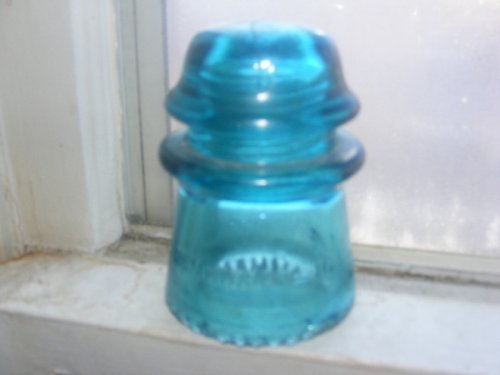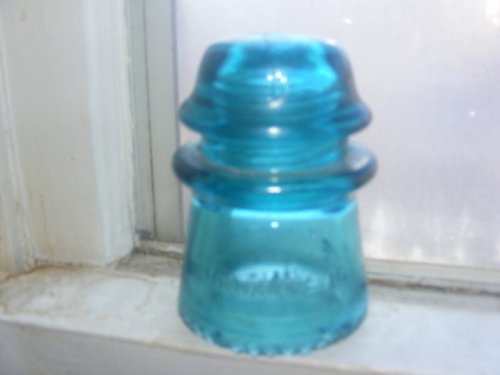You are using an out of date browser. It may not display this or other websites correctly.
You should upgrade or use an alternative browser.
You should upgrade or use an alternative browser.
what color would you call this??
- Thread starter creeper71
- Start date
sparrow75
Well-Known Member
Id say Hemingray blue......but let someone else confirm just to make sure
RED Matthews
Well-Known Member
Creeper71, I would say it is very blue - no doubt due to the cobalt in the glass batch. We have to wonder what is embossed on it and I am not very up on the CD numbers - but they help know how important it is. RED Matthews
BillinMo
Well-Known Member
I agree with Sparrow75 (Chris) - it's a Hemingray blue. The color's essentially identical to what jar collectors call "Ball Blue" but the thickness of insulator glass tends to show off the color better than thin jar walls. Both the Ball and Hemingray factories operated in Muncie, Indiana and both used sand from the same source that had enough trace minerals to produce the blue color. It could include very small amounts of cobalt... I'm not certain.
This is a telephone style, Hemingray 16, CD 122, made in the 1920s. By that time Hemingray would have only deliberately added cobalt to color the glass mixture if a customer specifically ordered cobalt blue products, and to my knowledge telephone companies weren't very interested in special colors.
Hemingray blues make a nice change from the typical aqua from around the same time period and look really pretty in a window, but it's not a rare or valuable color. An insulator like this might be worth a few dollars.
This is a telephone style, Hemingray 16, CD 122, made in the 1920s. By that time Hemingray would have only deliberately added cobalt to color the glass mixture if a customer specifically ordered cobalt blue products, and to my knowledge telephone companies weren't very interested in special colors.
Hemingray blues make a nice change from the typical aqua from around the same time period and look really pretty in a window, but it's not a rare or valuable color. An insulator like this might be worth a few dollars.
I paid 2.00 was that to much?ORIGINAL: BillinMo
I agree with Sparrow75 (Chris) - it's a Hemingray blue. The color's essentially identical to what jar collectors call "Ball Blue" but the thickness of insulator glass tends to show off the color better than thin jar walls. Both the Ball and Hemingray factories operated in Muncie, Indiana and both used sand from the same source that had enough trace minerals to produce the blue color. It could include very small amounts of cobalt... I'm not certain.
This is a telephone style, Hemingray 16, CD 122, made in the 1920s. By that time Hemingray would have only deliberately added cobalt to color the glass mixture if a customer specifically ordered cobalt blue products, and to my knowledge telephone companies weren't very interested in special colors.
Hemingray blues make a nice change from the typical aqua from around the same time period and look really pretty in a window, but it's not a rare or valuable color. An insulator like this might be worth a few dollars.
Similar threads
- Replies
- 0
- Views
- 648
- Replies
- 11
- Views
- 1K
Latest posts
-
-
Hot day nothing like cooling off with a Mountain Dew and a snow maid
- Latest: CanadianBottles
-
-
-
Latest threads
-
Is this a Miniature backbar bottle?
- Started by timeandabottle
- Replies: 2
-
Hot day nothing like cooling off with a Mountain Dew and a snow maid
- Started by Bluestreak39
- Replies: 3
-
-
-
-




